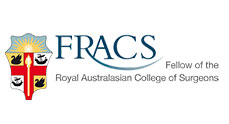What is Medical Taping?
Medical tape, also referred to as kinesiology tape, is a therapeutic tape that is applied strategically to areas of the body to reduce pain, lessen swelling, improve performance, and provide support. The tape is made of latex-free hypoallergenic cotton fiber with an acrylic heat-activated backing that stretches along its longitudinal axis and can be stretched 40 to 60 percent more than its resting length.
Medical taping is increasingly popular among athletes and is widely used for the treatment and prevention of sports injuries and other conditions.
Indications for Medical Taping
Chiropractors, physical therapists, occupational therapists, physicians, manual therapists, nurses, and certified athletic trainers across the globe are employing medical taping for the treatment of many musculoskeletal disorders from temporomandibular joint (TMJ) syndrome to turf toe.
The Kinesio Taping ® technique is believed to produce physiological effects on many body systems, including:
- Muscular system
- Fascial system
- Joint system
- Neural system
- Circulatory/lymphatic system
How Does Medical Taping Work?
Medical taping is designed to imitate the elasticity of the skin so you can utilize your full range of motion. The medical-grade adhesive property of the tape is also water-resistant and tough enough to remain on the body for 3 to 5 days, even during showers or work-outs.
When the medical tape is applied to your body, it slightly recoils and gently lifts your skin, creating more space between the skin and the tissues underneath. The increased space enables greater contractility in the muscles, which causes increased fluid mobility and better muscle performance. This results in decreased muscle fatigue, improved joint alignment, increased range of motion, and superior quality of muscle contraction.
Benefits of Medical Taping
Medical taping is used by therapists for the following reasons:
- Correcting movement patterns
- Improving posture
- Changing muscle tone
- Enhancing performance
- Supporting weak areas
- Treating injuries
- Reducing pain and tension at trigger points
- Improving joint spaces, thereby alleviating joint irritation
- Improving circulation of lymphatic fluids and blood in order to reduce swelling
- Improving the appearance of an injury or surgery scar





